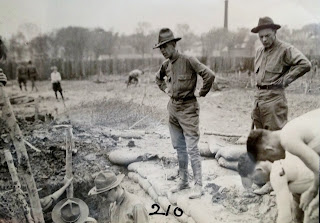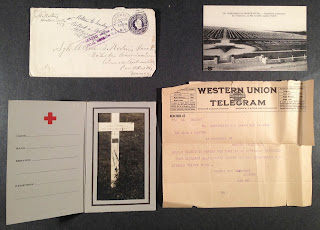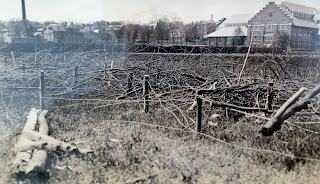 Veterans day is a day when we remember those served, as well as those who paid the ultimate price. In the end, though, it is just that: a day. It is vastly more important that we go a step further, that we try to remember the deeds and the lives that made our way of life possible. The best way to do this is to talk with veterans, to engage in an ongoing dialogue with those who witnessed history first hand. Unfortunately, we are witnessing the last of our World War Two veterans pass away, and Our First World War veterans are no longer with us. Where we cannot discuss history with first-hand witnesses, we must turn to the words and pictures they set down in their diaries and scrapbooks. As luck would have it, Rauner Special Collections Library holds a treasure trove of such items.
Veterans day is a day when we remember those served, as well as those who paid the ultimate price. In the end, though, it is just that: a day. It is vastly more important that we go a step further, that we try to remember the deeds and the lives that made our way of life possible. The best way to do this is to talk with veterans, to engage in an ongoing dialogue with those who witnessed history first hand. Unfortunately, we are witnessing the last of our World War Two veterans pass away, and Our First World War veterans are no longer with us. Where we cannot discuss history with first-hand witnesses, we must turn to the words and pictures they set down in their diaries and scrapbooks. As luck would have it, Rauner Special Collections Library holds a treasure trove of such items.With the approaching anniversary of the First World War, a few gems in the broad collection of materials stand out. Unbeknownst to most Dartmouth students, our college played an important part in the war. Before America's entry, Dartmouth sent the Dartmouth Ambulance Corps to France, where they valiantly contributed to the war effort. As a result, the first American to die in the First World War was a Dartmouth student. Upon America's entry into the war, Dartmouth raised a regiment of the Dartmouth Fusiliers, tearing up the athletic fields to build a full-scale trench system for the young men to drill in.
 Many albums in Rauner are filled with these jovial pictures of training and parades. Others depict the voyage to France or the destruction wreaked by German artillery. One small group of items stood out among these, more poignant than any image.
Many albums in Rauner are filled with these jovial pictures of training and parades. Others depict the voyage to France or the destruction wreaked by German artillery. One small group of items stood out among these, more poignant than any image.
Sgt. Allen Scott Norton, a Dartmouth student, diligently kept a small and neat diary, complete with many photographs and very much typical of those in the Rauner collections. Unlike many others, his diary is not finished. Sgt. Norton's mother learned of his death when a letter she sent her son was returned, stamped, "Deceased." A local newspaper reported that the family had yet to learn any further details. Later, they would receive a brief letter informing them of their son's death, and a small picture of the crude wooden cross that marked his final resting place. After the war, another letter was sent, informing them that the cross had been replaced with a stone marker, and providing them with a picture of the vast field of similar headstones, each representing on of his fallen comrades.
 Clockwise from the top left:
A letter to Sgt. Allen Scott Norton from his mother, stamped "Deceased." This is how the family first heard of their son's death in WWI.
A postcard of the cemetery in which Sgt. Norton was buried.
The official telegram noticing his family of his death.
A photo that accompanied the official telegram to his family, depicting his makeshift wooden grave marker.
Clockwise from the top left:
A letter to Sgt. Allen Scott Norton from his mother, stamped "Deceased." This is how the family first heard of their son's death in WWI.
A postcard of the cemetery in which Sgt. Norton was buried.
The official telegram noticing his family of his death.
A photo that accompanied the official telegram to his family, depicting his makeshift wooden grave marker.
I think these four objects commemorate service better than any day can.
Posted for Sandor Farkas, a '17 from Western Massachusetts. He is enrolled in ROTC and his passion for military history manifests itself in the American War of Independence reenacting and diorama making he does in his "free" time.

Typo: A local newspaper reported that the family had yet to learn any further details. latter, they would receive a brief letter informing them of their son's death, and a small picture of the crude wooden cross that marked his final resting place.
ReplyDeleteLater.... not "latter" to start the second sentence above.
Fixed!
ReplyDelete